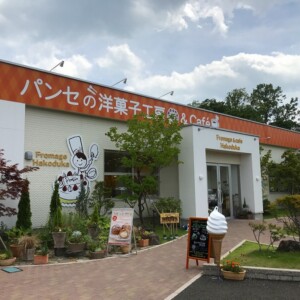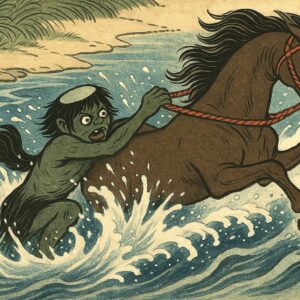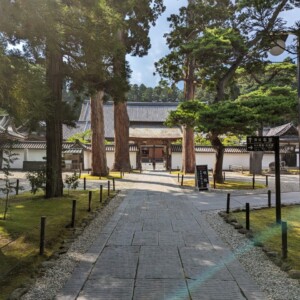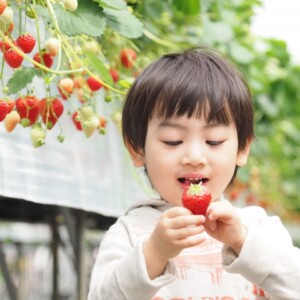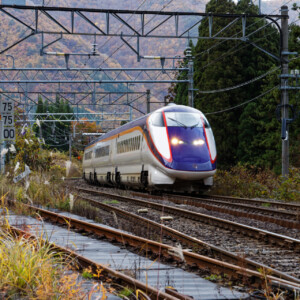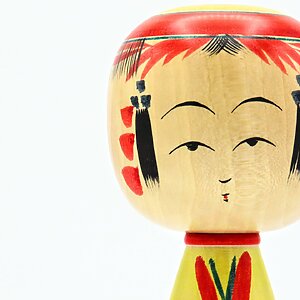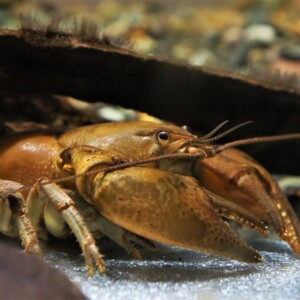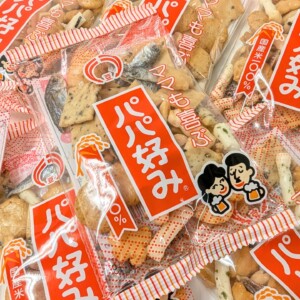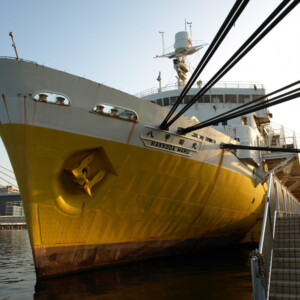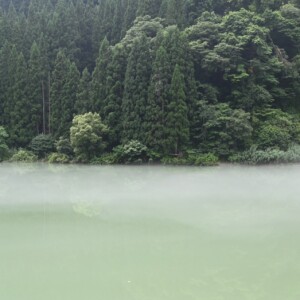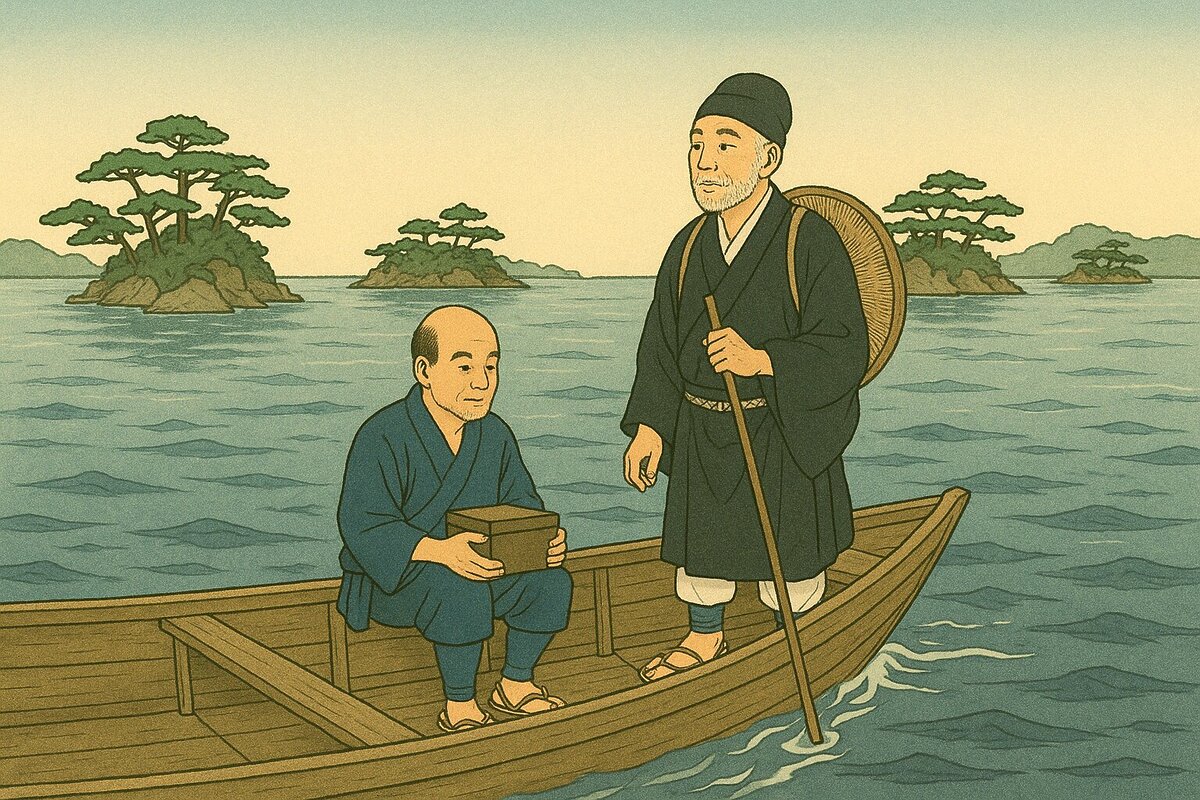
[Serialization: Following the narrow path of the depths ③] After leaving Sendai, Basho and Sora arrive at Matsushima by boat from Shiogama.
table of contents
- 1 What is Oku no Hosomichi?
- 2 Is it true that the original "Oku no Hosomichi" is located in Sendai?
- 3 [Tagajo] Tears flow from a stone monument inscribed with the ancient provincial capital
- 4 [Suenomatsuyama] The area between Sendai and Shiogama is a treasure trove of utamakura stories
- 5 [Shiogama] Visit Shiogama Shrine, rebuilt by Date Masamune
- 6 [Matsushima] I was so moved at the long-awaited land of Utamakura that I was once again unable to compose a haiku
- 7 [A detour into the depths③] What kind of person was Matsuo Basho?
- 8 summary
- 9 [Series: Following the Oku no Hosomichi] Series article
Matsuo Basho and his disciple Kawai Sora left Fukagawa in Edo on March 27th, 1689 (May 16th in the Gregorian calendar) and arrived in Sendai on May 4th (June 20th in the Gregorian calendar)
We will stay in this castle town of the Sendai domain, which had a fief of 620,000 koku, for 4 nights and 5 days, visiting the city's famous poetic pillows and historical sites, and then on May 8th (6/24), we will head to Matsushima, one of Basho's poetic pillows, via Shiogama, our next destination
What is Oku no Hosomichi?
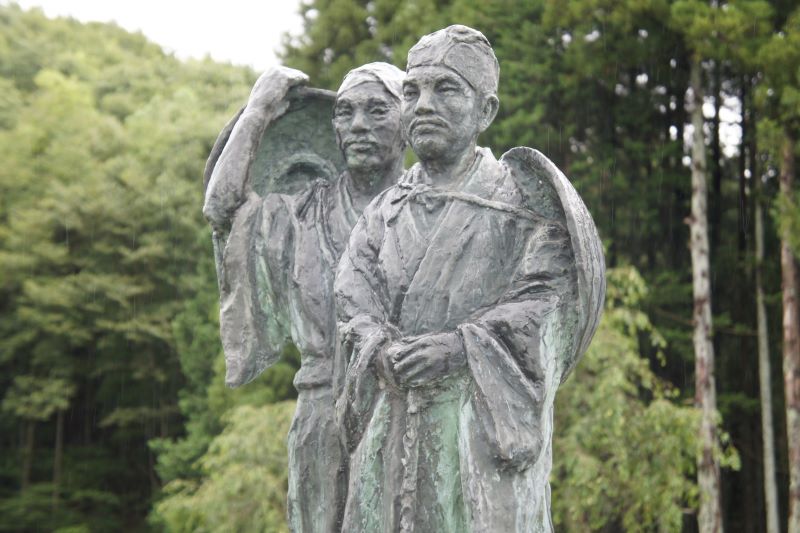
``Oku no Hosomichi'' is a journey in which the haiku poet Matsuo Basho and his disciple Kawai Sora travel from Edo to Mutsu, from Hokuriku to Ogaki in Gifu, visiting Utamakura and famous historical sites while composing haiku. This is a collection of travelogues.
Utamakura refers to famous historical sites whose images and emotions were woven into waka poems by poets from ancient capitals, and were the object of admiration for poets and haiku poets.
The preface , "The days and months are travelers who continue their eternal journey, and the years that come and go are also travelers , appears in textbooks and is translated as "The days and months are travelers who continue their eternal journey, and the years that come and go are also travelers."
It introduces the climate of Michinoku and the haiku poems that were composed there, and is a record of the 156-day journey of approximately 2,400 km from the start of the journey on March 27, 1689 (May 16, 1689 according to the current calendar).
Is it true that the original "Oku no Hosomichi" is located in Sendai?
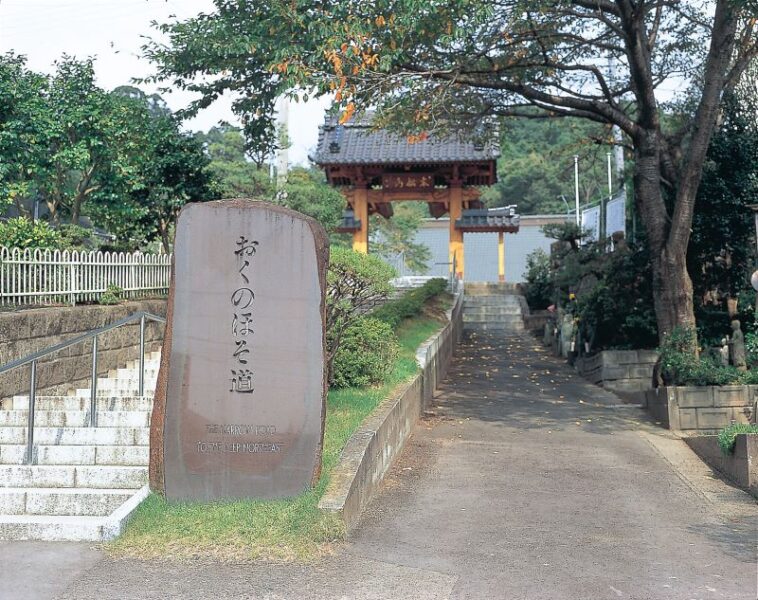
Before arriving at Taga Castle, Basho and his companions crossed Imaichi Bridge, located upstream of Iwakita Bridge on the Nanakita River, which flows north of Sendai, and visited Toko-ji Temple
Near this temple is the village of Suga, and the Suga trees here are of such high quality that they are used to make hats and raincoats that they are even featured in utamakura poems as "Tofu no Suga."
The roads in this area during the Edo period were very picturesque, and the Sendai haiku poet Oyodo Sanzenfu named this road "Oku no Hosomichi" ). It is said that Basho, who was so impressed by this name, used it as the title of one of his travelogues.
Currently, in front of the main gate of Tokoji Temple, there is a magnificent stone monument with the inscription "Oku no Hosomichi."
Tokoji Temple <Information>
- Facility name: Tokoji Temple
- Address: 22 Iwakiriyama, Miyagino Ward, Sendai City, Miyagi Prefecture
- Phone number: 022-255-8906
- URL: Tokoji Temple official website
Google Map
[Tagajo] Tears flow from a stone monument inscribed with the ancient provincial capital
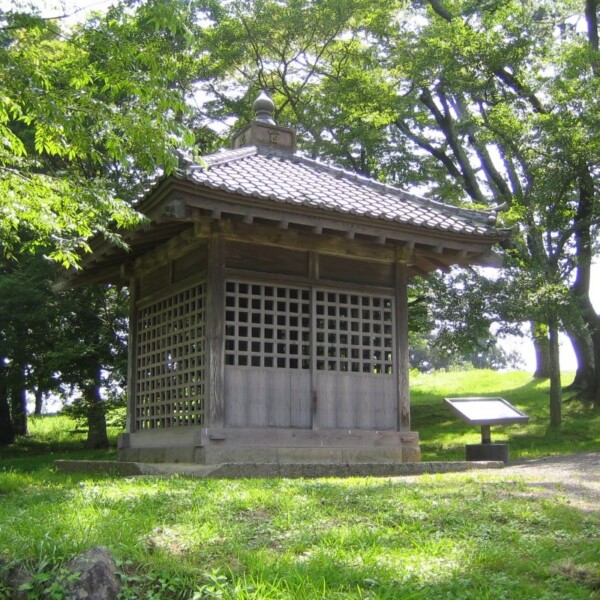
Taga Castle, built in 724, was the provincial capital of Mutsu Province and flourished as a cultural, political, and military base for the region until the mid-11th century
Tsubo no Ishibumi is an ancient monument erected during the Nara period (around the 8th century). It records the history of Taga Castle, the surrounding area at the time, and Heijo-kyo, and has been used as a utamakura (poem pillow) in many waka poems.
Standing before this monument, Basho wrote, "I was deeply moved by this stone monument, which has remained unchanged for a thousand years, and I shed tears."
Tagajo Monument (Pot Monument) <Information>
- Facility name: Taga Castle Monument (Tsubonoishibumi)
- Address: Taga Castle Ruins, 16 Ichikawadayaba, Tagajo City, Miyagi Prefecture
- Phone number: 022-364-5901 (Tagajo City Tourism Association Office)
- URL: Tagajo City Tourism Association Official Website
Google Map
[Suenomatsuyama] The area between Sendai and Shiogama is a treasure trove of utamakura stories

On the way from Sendai to Shiogama, the author makes detours to famous poetic sites such as "Sueno Matsuyama," "Noda no Tamagawa," and "Okinoishi (Okinoi)."
Suenomatsuyama is located on the mountain behind Hokokuji Temple, and was not submerged even in the great tsunami of the past, so it became famous as "a place where the waves never come over," and is a poetic pillow word that expresses unchanging love
The two pine trees, standing as if a man and a woman leaning against each other, exude a sense of transience
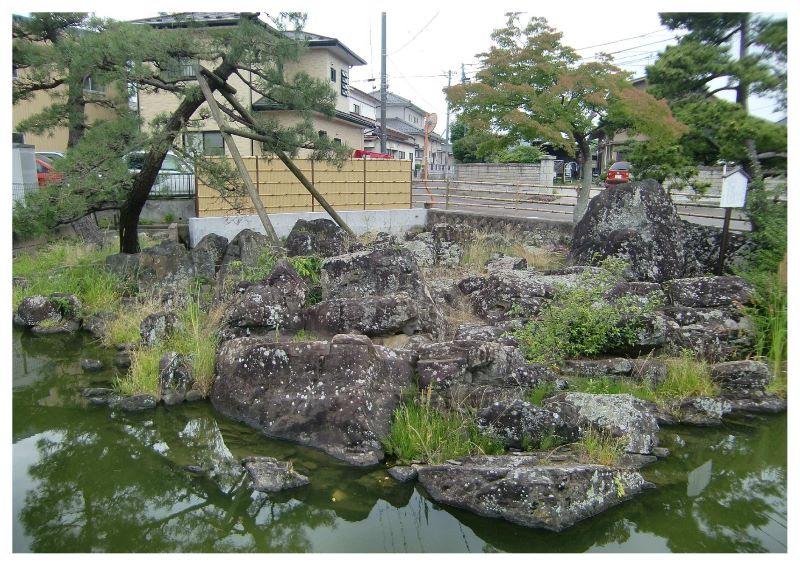
Further afield, Okinoishi, located at the foot of Matsuyama, is located in a residential area, yet its strange rock formations make their presence known
However, Tamagawa River in Noda is now covered with a concrete embankment and has lost all trace of its former glory
Sueno Matsuyama <Information>
- Facility name: Suenomatsuyama
- Address: 2-8-28 Yahata, Tagajo City, Miyagi Prefecture
- Phone number: 022-368-1141
- URL: Tagajo City Official Website
Google Map
[Shiogama] Visit Shiogama Shrine, rebuilt by Date Masamune
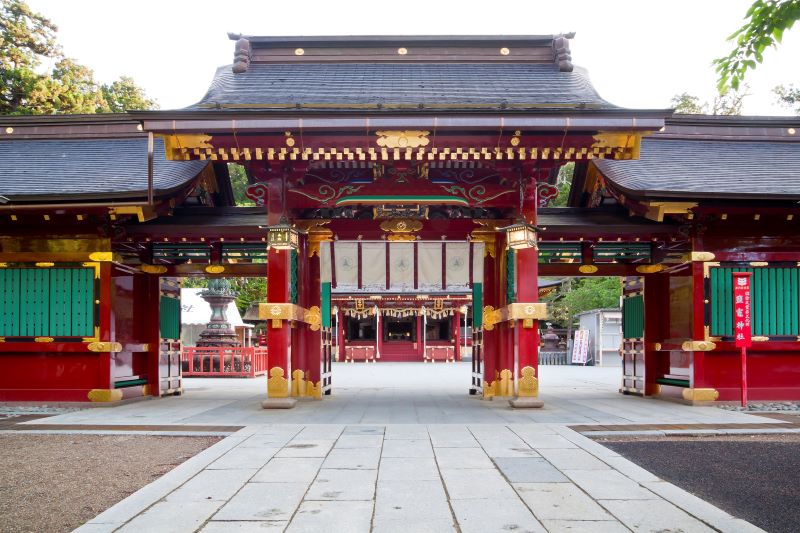
visited Shiogama Shrine, Oshu Ichinomiya , which was rebuilt by Date Masamune, before heading to Matsushima
In front of the shrine stands a pagoda donated by Fujiwara Tadahira, which contains an inscription that conveys Basho's feelings for the loyal warrior who, in accordance with the will of his father, Hidehira, fought to protect Minamoto no Yoshitsune until the very end
After paying their respects, they charter a boat to enter Matsushima by sea and disembark on Oshima Island
Shiogama Shrine (Shiogama Shrine) <Information>
- Facility name: Shiogama Shrine (Shiogama Shrine)
- Address: 1-1 Ichinomoriyama, Shiogama City, Miyagi Prefecture
- Phone number: 022-367-1611
- URL: Shiogama Shrine official website
Google Map
[Matsushima] I was so moved at the long-awaited land of Utamakura that I was once again unable to compose a haiku
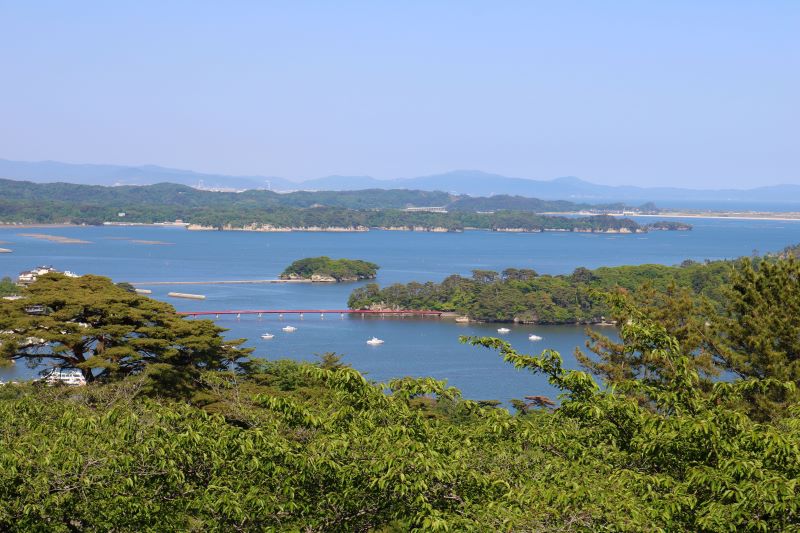
Around noon on May 9th (June 25th), Basho arrived at Matsushima, one of the "Three Views of Japan,"
The text praises the natural beauty of the islands of various sizes and shapes floating in the bay, each carrying a pine tree, as a magnificent sight, and expresses the author's further excitement at the moonlit view at night
Perhaps Sora was so moved by his wish coming true, that just like at Shirakawa Barrier, Matsushima "so wonderful that I couldn't think of a haiku ," and a haiku by Sora was included in the main text.
Matsushima, the cuckoo is engulfed in a crane (Sora)
It means, "The magnificent view of Matsushima is a place befitting a crane, so I hope the cuckoo singing now will also transform into a crane."
It is said that the graceful crane suits the beautiful scenery of Matsushima better than the beautiful song of the little cuckoo
Matsushima Coast <Information>
- Facility name: Matsushima Beach
- Location: Matsushima, Matsushima-machi, Miyagi-gun, Miyagi Prefecture
Google Map
[Matsushima] When did Basho visit Zuiganji Temple?

The main text states that Basho visited Zuiganji Temple on May 11th (June 27th), but Sora's travel diary indicates that he visited Zuiganji Temple immediately after arriving in Matsushima on the 9th
Zuiganji Temple has existed under a different name since the 9th century in Matsushima, a sacred place, but when Date Masamune made it his family temple it was given the name "Zuiganji Temple." The main hall and the adjacent kuri (kitchen) are national treasures.
These buildings still look the same as they did when Basho visited, but the nearby National Route 45 is lined with souvenir shops and restaurants, and amid the hustle and bustle of tourists and cars, you can sense the timelessness of fashion
To commemorate Basho's visit, Zuiganji Temple holds a Basho Festival every year on the second Sunday of November
Zuiganji Temple <Information>
- Facility name: Zuiganji Temple
- Address: 91 Matsushimacho, Matsushima-machi, Miyagi-gun, Miyagi Prefecture
- Phone number: 022-354-2023
- URL: Zuiganji Temple Official Website
Google Map
【A detour into the depths③: What kind of person was Matsuo Basho?
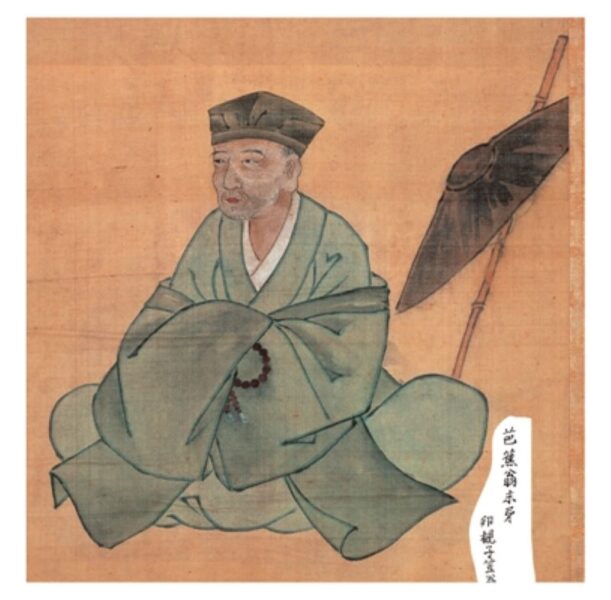
Basho was a haiku poet of the Edo period who elevated the artistic value of haikai, which had been a pastime for waka poetry, and established a style of haiku known as "Shofu Haikai."
He was born in 1644 in Iga Ueno (Mie Prefecture) to a farming family that was allowed to use the surname and carry a sword. He took the name Matsuo Munefusa and served a samurai family, where he discovered haiku
Basho then went to Edo at the age of 29 in search of a new life in haiku, where he deepened his connections with haiku poets in Nihonbashi and made a name for himself, before living a secluded life at Basho-an in Fukagawa
Then, at the age of 46, he realized the transience of owning a home while living in seclusion, and decided to travel to Michinoku. From then on, he found his ideal form as a haiku poet through his travels.
summary
The official spelling is "Shiogama," but it is sometimes written as "Shiogama." Between Sendai and Shiogama is Taga Castle, the capital of Mutsu Province, and there are many important poetic sites there, and Basho and Sora stopped off at many of them
In the main text, Basho "after visiting Zuiganji Temple on the 11th, I headed for Hiraizumi but took a wrong turn and ended up in Ishinomaki ," but Sora's travel diary has him travel to Ishinomaki on the 10th and stay there overnight.
It is unclear whether this was a misunderstanding on Basho's part or if there was some other intention behind it, but they left Matsushima and headed for Hiraizumi in Iwate Prefecture, the final destination of their journey to the depths of the country









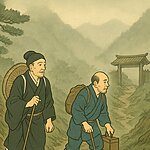


![[Serialization: Following the narrow path in the back part 2] After arriving in Miyagi Prefecture, Basho and Sora aim for Sendai, the capital of forests. Oku no Hosomichi 2](https://jp.neft.asia/wp-content/uploads/2023/09/f05201ee29d975b84ec437a8b76f2b98-150x150.jpg)
![[Serialization: Following the narrow road in the back part 7] The journey is finally coming to an end, from Dewa to Uzen, and then to Hokuriku Oku no Hosomichi 7](https://jp.neft.asia/wp-content/uploads/2023/10/ef46a9f4e23d51f52518cd66fade3cd6-1-150x150.jpg)
![[Series: Tracing the narrow path of the depths ④] Arriving at Hiraizumi, the Pure Land of the three generations of Fujiwara Basho, a dream of Basho Oku no Hosomichi 4](https://jp.neft.asia/wp-content/uploads/2023/09/addf9e31ea8b62f6903d5ad9db53d39e-1-150x150.jpg)
![Matsuo Basho was impressed by the legendary landscape of Kujukushima, the elephant, which is not seen now [Nikaho City, Akita Prefecture] Image of Kujukushima (Zogata)](https://jp.neft.asia/wp-content/uploads/2024/11/e07987a7f27f41ed4fd79661bf32afbc-150x150.jpg)
![[Serialization: Following the narrow path in the back of the mountain ⑤] Struggling with the narrow path through the mountain pass and the difficult checkpoints, we headed to Dewa Province Oku no Hosomichi 5](https://jp.neft.asia/wp-content/uploads/2023/09/28a347e9b86312617fa5dcb3d266a91b-1-150x150.jpg)
![[Series: Following the narrow path to the back of the mountain ⑥] Go down the Mogami River and visit the Dewa Sanzan, one of Japan's three major Shugendo practices Oku no Hosomichi 6](https://jp.neft.asia/wp-content/uploads/2023/09/786c5389e81e05d443e2f0e37aae4289-1-150x150.jpg)
![Mokoshiji Temple, the world heritage site with Japan's oldest garden, the Jodo Garden [Iwate Prefecture] Motsuji Temple (entrance)](https://jp.neft.asia/wp-content/uploads/2016/10/IMG_3844-150x150.jpg)
![[Serialization: Following the narrow path in the back part 1] Your trip to Tohoku begins with "crossing the Shirakawa barrier" Oku no Hosomichi 1](https://jp.neft.asia/wp-content/uploads/2023/09/bf359c7fd6a5dbae7719b52ccd3b870b-1-150x150.jpg)
